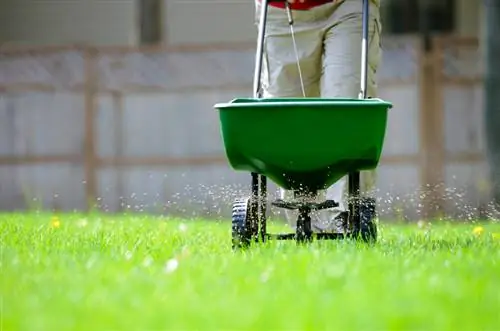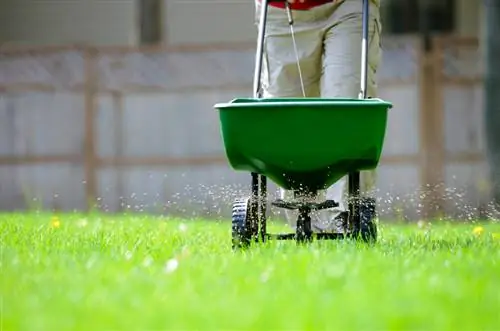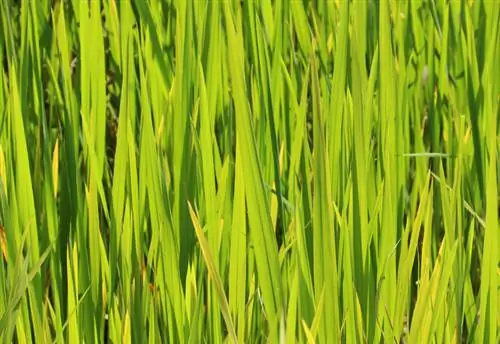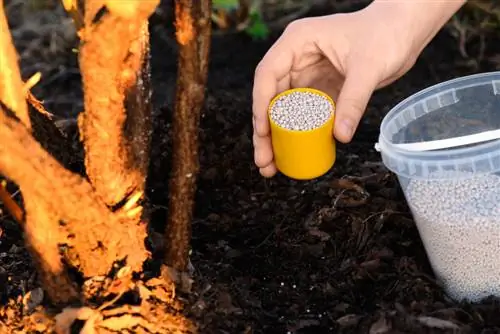- Author admin [email protected].
- Public 2023-12-16 16:46.
- Last modified 2025-06-01 06:02.
Rolled turf transforms barren wasteland into a velvety green carpet within a day. To ensure that it stays that way, the correct supply of nutrients is of the utmost importance. Find out here when and how to fertilize turf according to all the rules.

When and how often should you fertilize turf?
Rolled turf should be fertilized for the first time 3-4 weeks after laying. Ornamental lawns need fertilizer in spring (March/April) and summer (July/August), while commercial lawns should be fertilized in March, May, August and October. Use organic or mineral-organic fertilizers for sustainable nutrient supply.
Schedule for the correct fertilization of turf
When you fertilize a turf is just as relevant to vital growth as the process itself. Although the choice of fertilizer and regional conditions are also important, the following schedule has proven to be a good rule of thumb:
- Fertilize turf for the first time 3-4 weeks after laying
- Fertilize ornamental lawns in spring (March/April) and summer (July/August)
- Fertilize stressed commercial lawns in March, May, August and October
Environmentally conscious gardeners favor organic or mineral-organic preparations, as these also vitalize soil life. More and more lawn experts are moving away from purely mineral preparations such as blue grain. The grasses will only shoot up for a short time without being strengthened in the long term, as the organic nutrient supply promises.
Verticutting optimizes the absorption of turf fertilizer
So that rolled turf effectively absorbs the nutrients from the lawn fertilizer, it is scarified beforehand. At least once a year, experienced hobby gardeners treat the greenery to this vitalizing treatment. Rotating blades comb moss and weeds out of the turf so that the turf fertilizer can fully develop its effect.
Fertilize turf in an exemplary manner - this is how it works
After you have mowed the lawn or additionally scarified it, apply the fertilizer. That's what matters:
- The grass area is dry but not dried up
- Spread the preparations with the spreader or a hand spreader
- A dosage of 80 to 120 grams per square meter is considered appropriate
So that a turf can fully absorb the nutrients, the area is watered. Repeat the irrigation in the following days until no more fertilizer grains can be seen. Do not blast turf under direct sunlight as it could cause burns.
This is how lime regulates acidified lawns
Increased moss growth indicates that the turf may be acidic. Therefore, check the pH value (€4.00 at Amazon) using a test from the hardware store. If the result is below 5.5, correct the deficiency with lime. For this purpose, choose a mild vital lime or rock powder. Apply the lawn lime in the recommended dosage and then water the area. It should be 3-4 weeks before the next dose of fertilizer.
Tips & Tricks
In spring, turf focuses its appetite on nitrogen for dense growth and phosphorus for a rich green color. In autumn, on the other hand, the finished lawn is primarily looking for potassium in order to prepare itself for the frosty temperatures of winter. Therefore, when choosing fertilizer, pay attention to the seasonally coordinated NPK composition.






